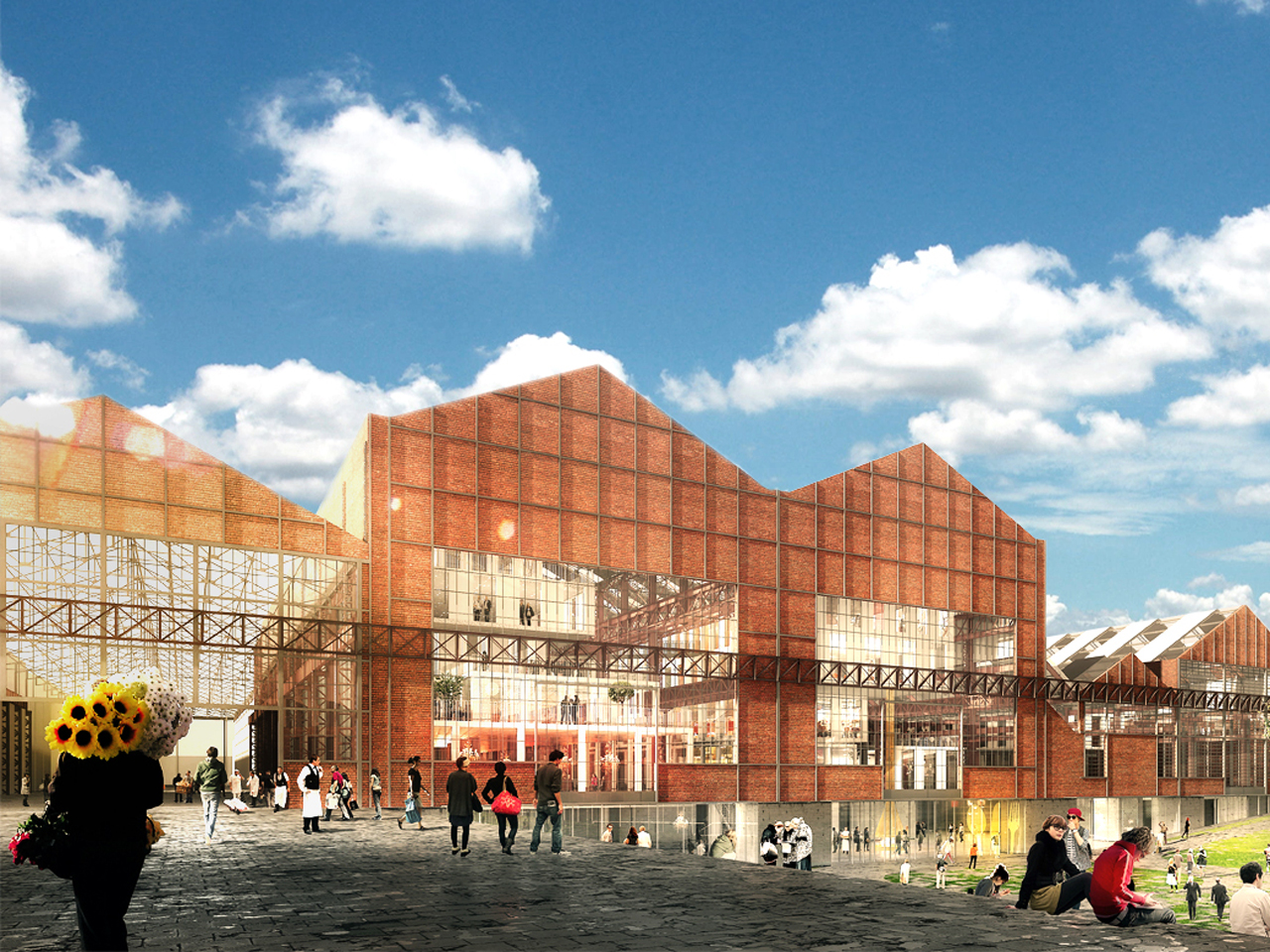
Lille Lycée Hôtelier
The former steelwork sheds on Lilles Fives-Cail-Babcock site are to be transformed into the training college Lycée Hôtelier de Lille. As one of Europes largest industrial complexes, the site and former industrial activities are deeply rooted in the city's history. The principle concept was to make a new city above the existing, an act of memory as well as projection into the future, building upon the historic buildings as the best lever for innovation and creating a contemporary spirit for the city.
- Location
- Lille, France
- Status
- Competition
- Year
- 2010–2010
- Surface
- 22500 m²
- Client
- Ville de Lille
- Programmes
- Educational, Residential, Master plan
The challenge MVRDV faced was how to maintain the spatial qualities, character and monumentality of the existing structtures, while creating a contemporary transformation that embodies their historical significance. The concept was to make ‘a city above the city’, as an act of remembrance and as a gesture to the future, building upon the existing as the best way to innovate.
Thus, the new school can be considered an exemplary reuse project, renjuvenating the existing halls while maintaining their industrial legacy.
The halls have an undeniably intriguing structural and spatial quality. Thus existing brick walls are preserved and steel beams remain in their original positions. The remaining gaps are filled with glass to allow for maximum daylighting and views between the halls and the street. The new school, albeit in connection with the existing, maintains a respectful distance, so as not to overshadow the historic buildings. Between the two, a public square is formed as a "green valley", and becomes a stage for public events.
By organizing the school as a profusion of classrooms and technical practices: an open theater created by sets of overlays, juxtapositions, connections and shifts offering a great variety of spaces: a vertical village vibrating a wide range of activities, from preparation to consumption.
Can a ‘Grande Brasserie’ be imagined beneath the halls? An area where students eat and cook at the same time, a space where the preparation process is visible to all. The school’s facade, in connection with the covered street, reveals the activities of the Grande Brasserie as well as all public functions, including a restaurant, bakery, florist, hotel and spa on the ground floor.
A new building at a more human scale than the halls, the "Triangle", accommodates the school’s student residences. It is adapted and in dialogue with the surrounding urban tissue in terms of material and scale. On the roof is a garden where herbs and fruits for the school are cultivated. Rainwater from great roofs of the halls and the triangle are collected and stored for the garden.
Gallery
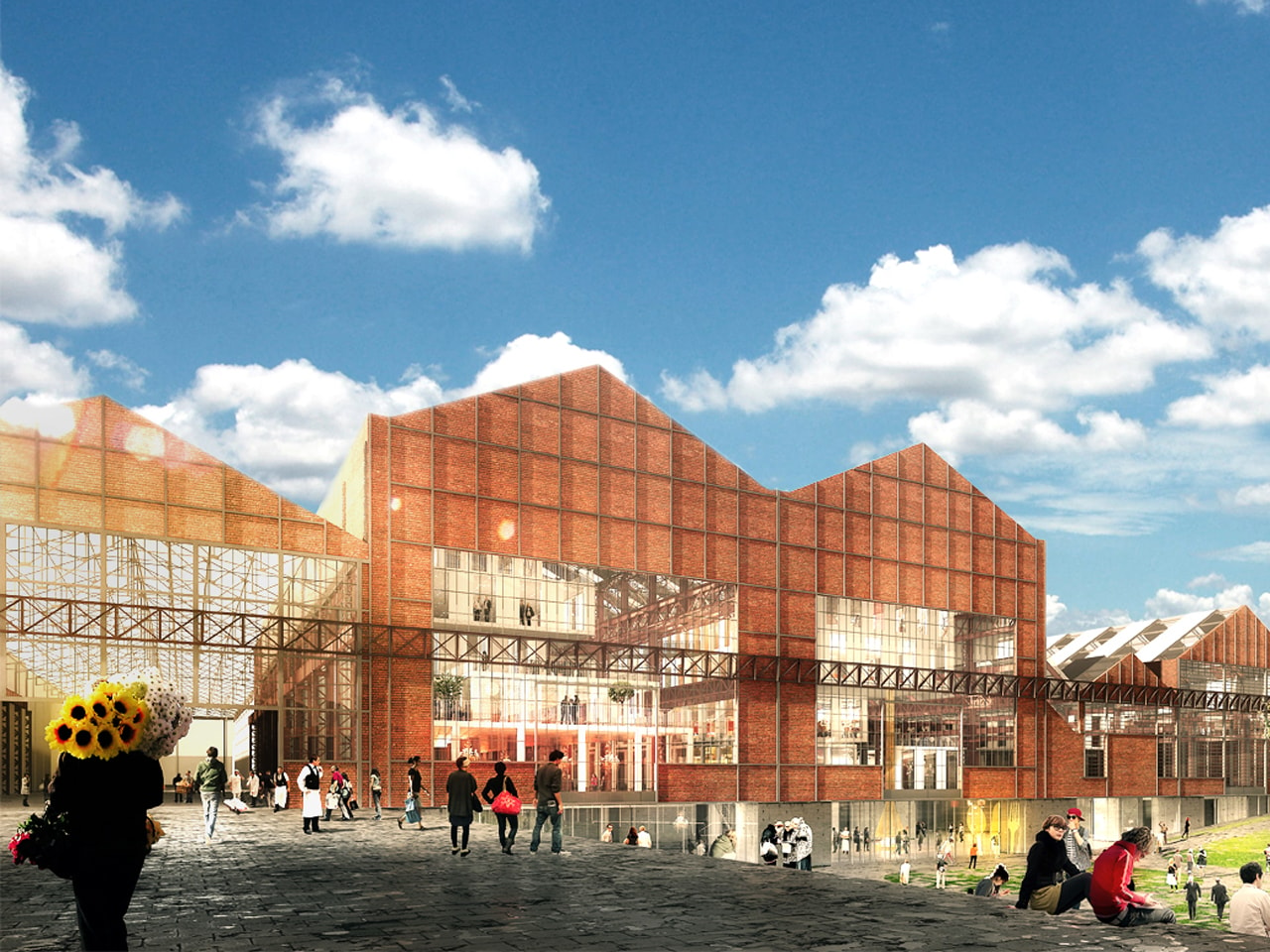
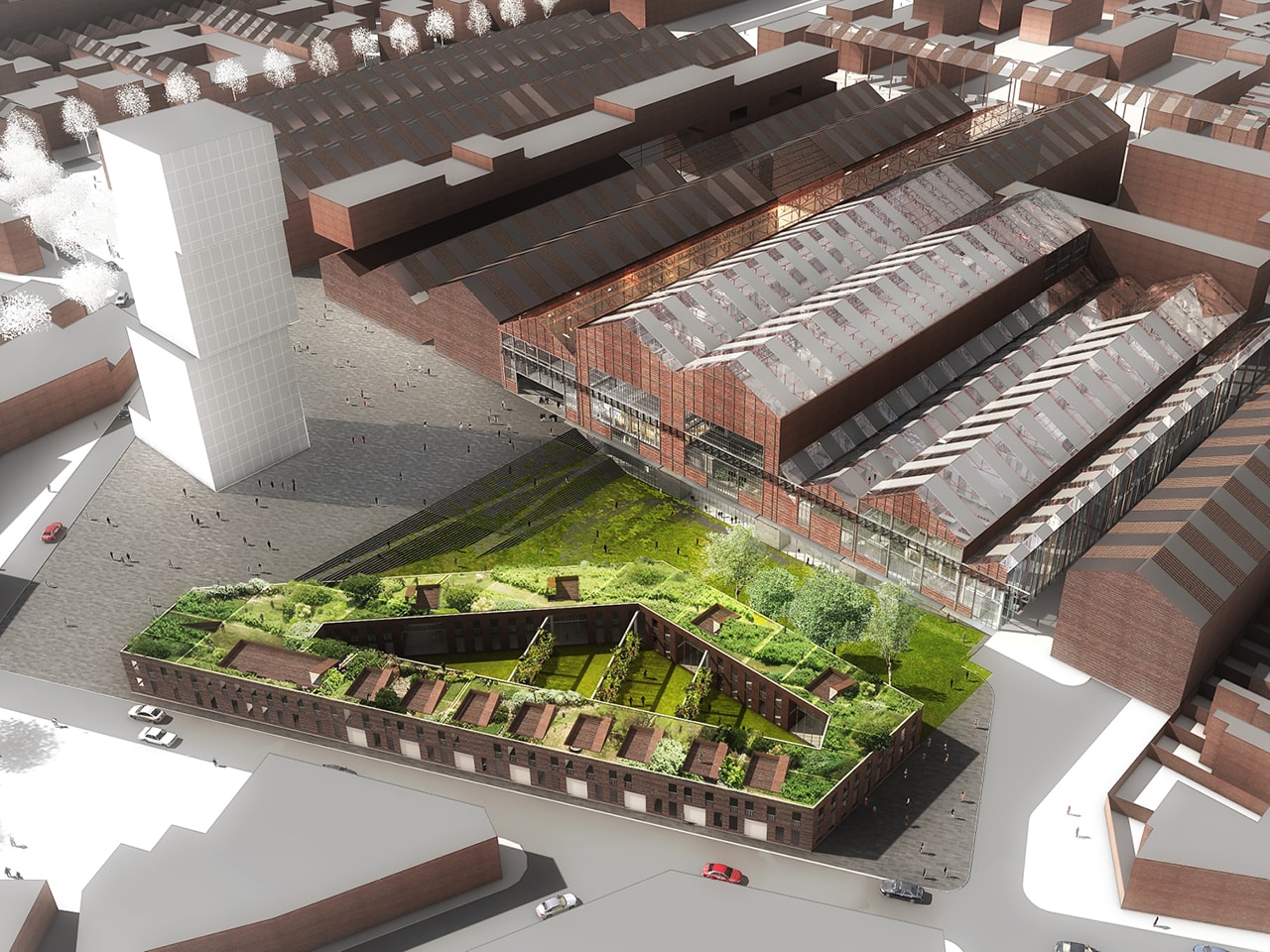
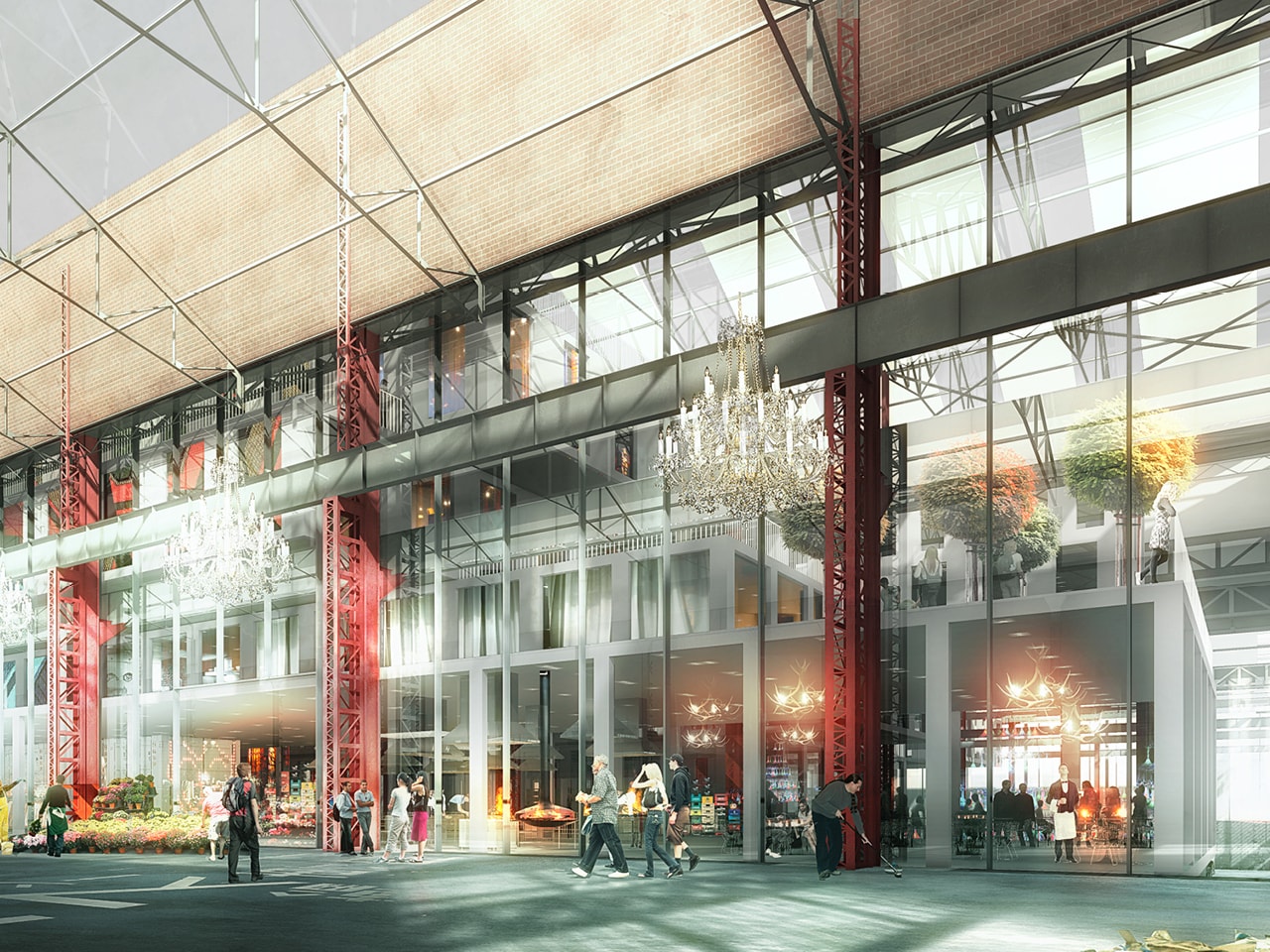
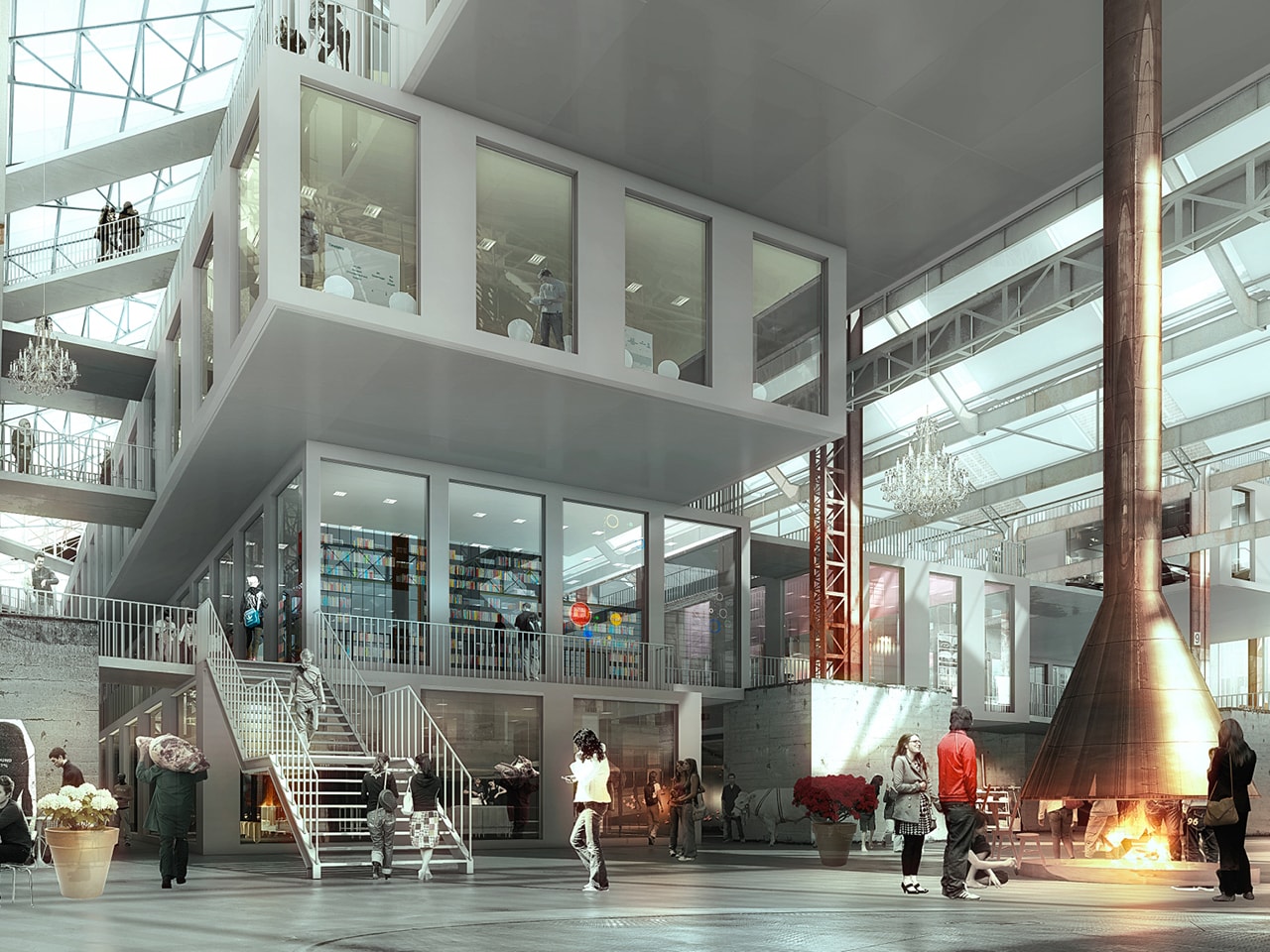
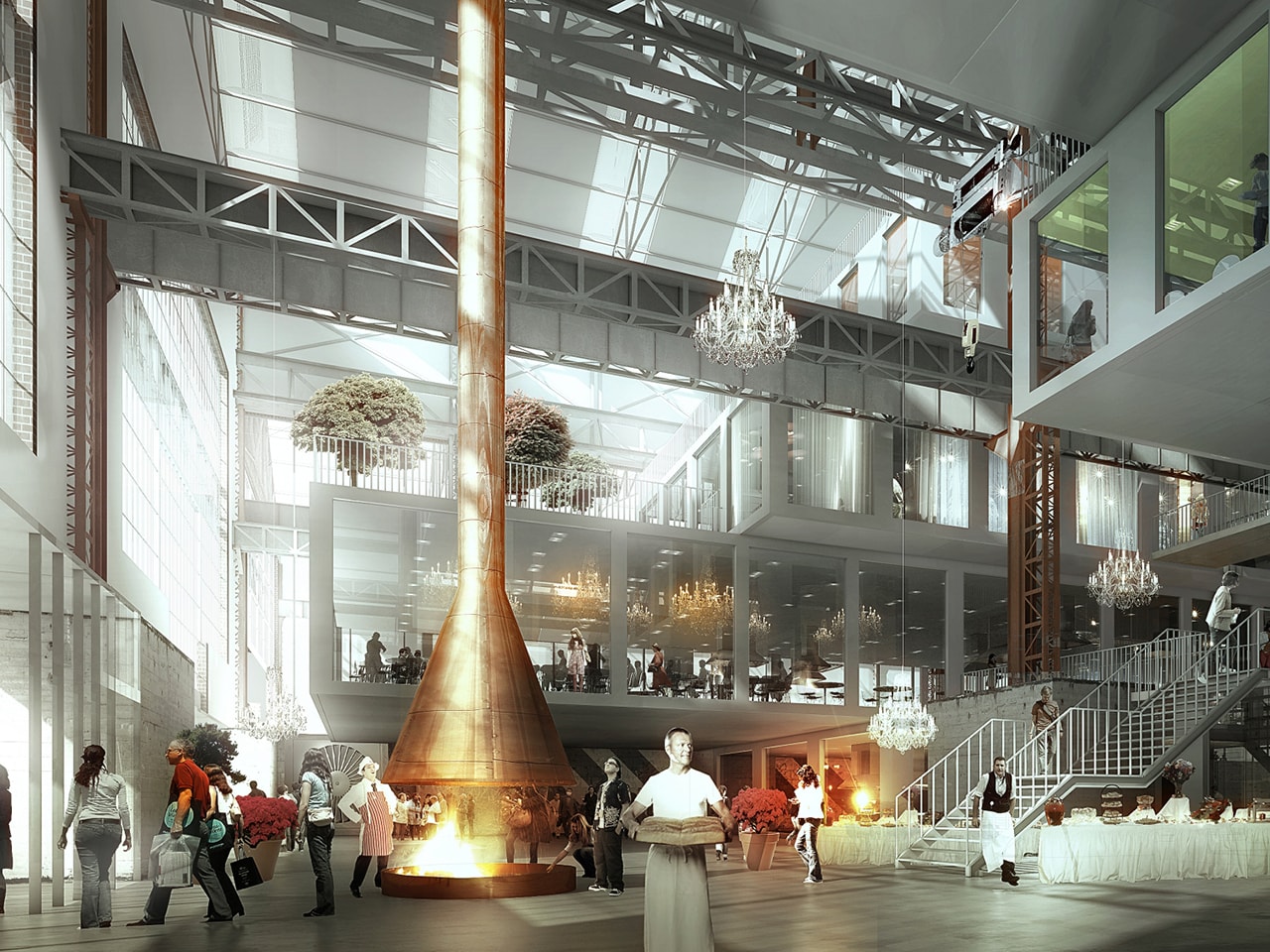
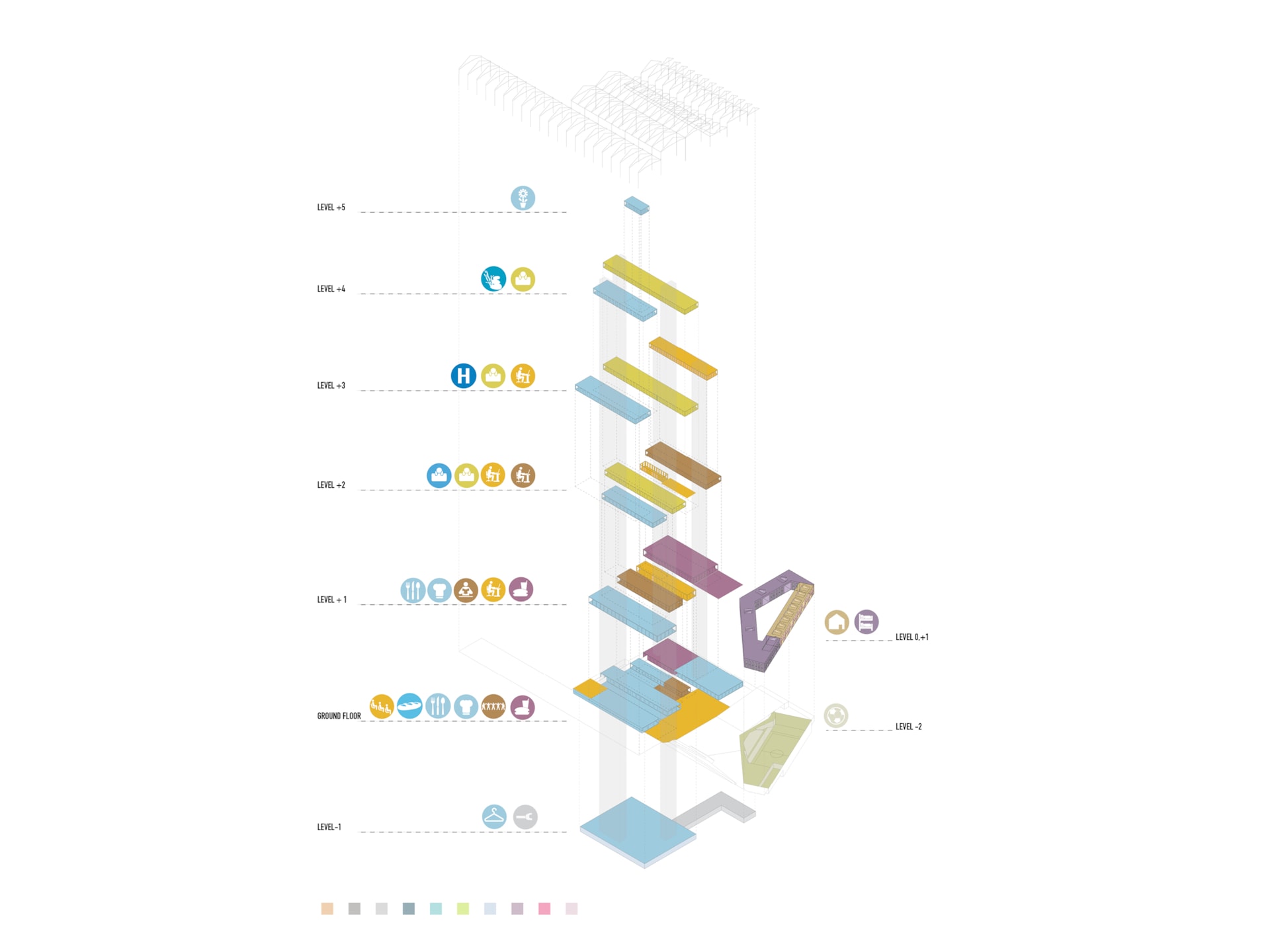

Credits
- Architect
- Principal in charge
- Partner
- Design team